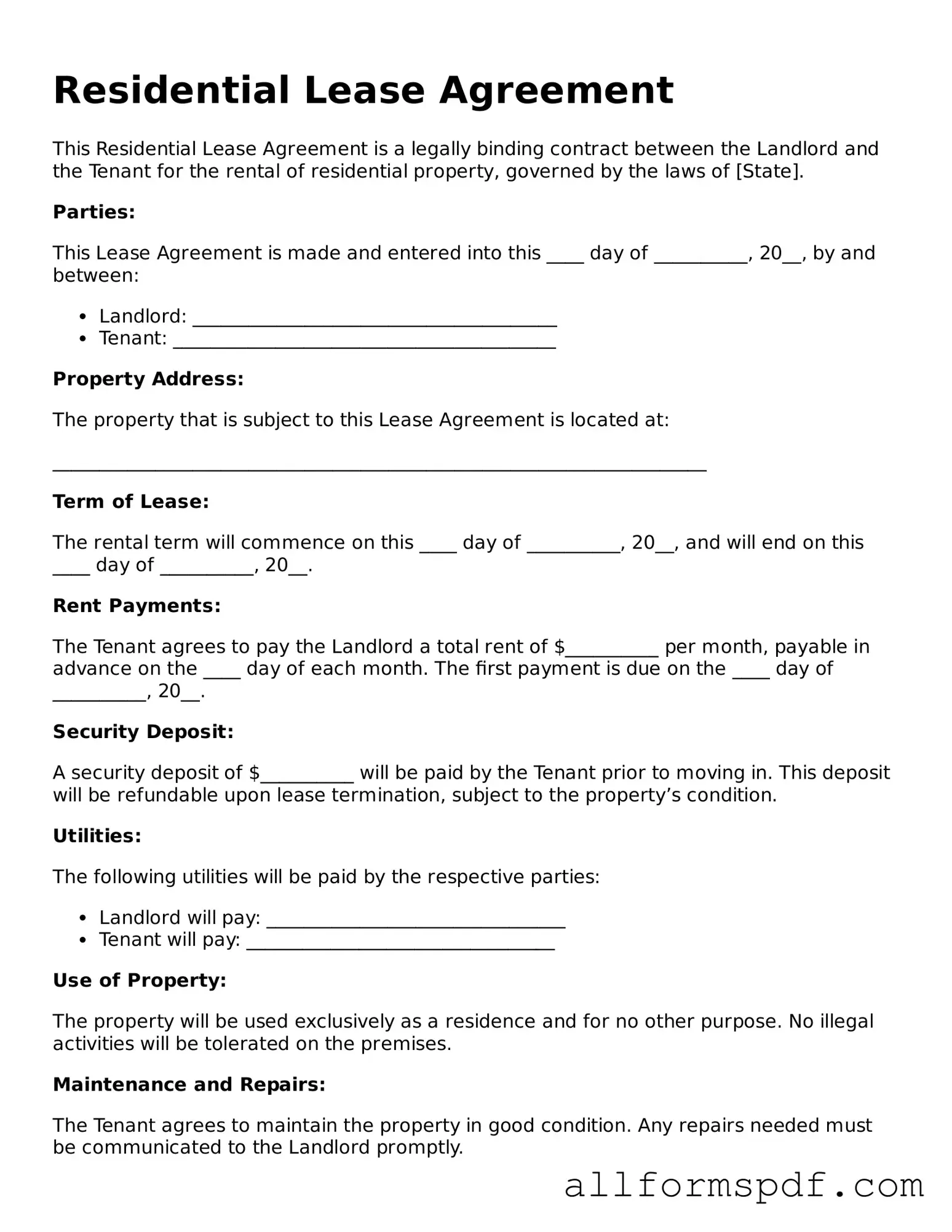Printable Lease Agreement Form
A Lease Agreement is a legally binding contract between a landlord and a tenant that outlines the terms and conditions of renting a property. This document serves to protect the rights of both parties, ensuring clarity regarding rent, duration, and responsibilities. Understanding the key components of a lease agreement is essential for anyone involved in a rental arrangement.
Create My Lease Agreement Now
